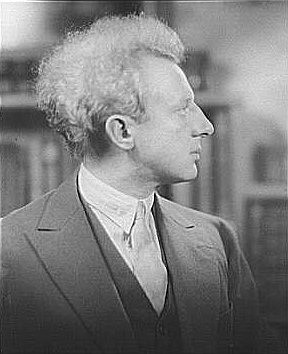 Facebook
Facebook
 X
X
 Instagram
Instagram
 TikTok
TikTok
 Youtube
Youtube

I came across some vinyl records with the label “Phase 4 Stereo” on them. I promptly contacted my friend who is into vinyl and gave them over to him. He must have thought me a fool.
I was baptized into classical music after the invention of the CD. Mercury Living Presence, RCA Living Stereo, and London/Decca Phase 4 Stereo meant nothing to me. As a classical music associate at Tower Records in the 1990s, I saw the re-release of the Living Presence and Living Stereo recordings onto CD. I don’t recall seeing London’s Phase 4 Stereo at the time. They have since been re-released as well.
I do recall certain “regulars” being excited to see the Living Presence and Living Stereo recordings on CD. I also recall trying to memorize The Penguin Guide to Classical music. The Living Presence and Living Stereo recordings didn’t get much love from Penguin. My attention was on Georg Solti, Herbert von Karajan, and an emerging Simon Rattle.
Now I find myself obsessing about Phase 4 Stereo and the recording made by Leopold Stokowski in particular. They are all the things that Stokowski was. They are over-the-top, manipulated, unnatural, and unrealistic, examples of the technological advancements run amok in classical music and I love them.
Some of the Stokowski Phase 4 Stereo recordings are on YouTube and I’ve been giving them all of my attention. YouTube is not the media of choice for the audiophile but I lack the will to put an analog stereo system together with a vinyl turntable. Where would I put it? YouTube it is and you know what? The grandeur of the sound is at least implied.
One of the Phase 4 records I gave away was the Stokowski version of Tchaikovski’s Symphony No. 5. The final two movements are available on YouTube. If you are familiar with the symphony then you are going to notice some changes at the end. Stokowski was famous for changing the orchestration of almost every piece of music he conducted. The obvious thing here is the lack of a grand pause and the inclusion of a crazy horn part in the final bars.
The entire recording of Scheherzade by Nikolai Rimsky-Korsakov is available. Phase 4 Stereo used up to 24 microphones which allowed the engineers—and Stokowski— to emphasize individual elements of the orchestra. You will never hear Scheherzade sound like this in a concert hall. The YouTube version sounds as if it is being overpowered by its own self.
The final piece I’d like to visit is Antonio Vivaldi’s The Four Seasons. This is as far from period instrument and period performance practices as you can get. This is balls-to-the-wall, peddle-to-the-metal music making.


I came across some vinyl records with the label “Phase 4 Stereo” on them. I promptly contacted my friend who is into vinyl and gave them over to him. He must have thought me a fool.
I was baptized into classical music after the invention of the CD. Mercury Living Presence, RCA Living Stereo, and London/Decca Phase 4 Stereo meant nothing to me. As a classical music associate at Tower Records in the 1990s, I saw the re-release of the Living Presence and Living Stereo recordings onto CD. I don’t recall seeing London’s Phase 4 Stereo at the time. They have since been re-released as well.
I do recall certain “regulars” being excited to see the Living Presence and Living Stereo recordings on CD. I also recall trying to memorize The Penguin Guide to Classical music. The Living Presence and Living Stereo recordings didn’t get much love from Penguin. My attention was on Georg Solti, Herbert von Karajan, and an emerging Simon Rattle.
Now I find myself obsessing about Phase 4 Stereo and the recording made by Leopold Stokowski in particular. They are all the things that Stokowski was. They are over-the-top, manipulated, unnatural, and unrealistic, examples of the technological advancements run amok in classical music and I love them.
Some of the Stokowski Phase 4 Stereo recordings are on YouTube and I’ve been giving them all of my attention. YouTube is not the media of choice for the audiophile but I lack the will to put an analog stereo system together with a vinyl turntable. Where would I put it? YouTube it is and you know what? The grandeur of the sound is at least implied.
One of the Phase 4 records I gave away was the Stokowski version of Tchaikovski’s Symphony No. 5. The final two movements are available on YouTube. If you are familiar with the symphony then you are going to notice some changes at the end. Stokowski was famous for changing the orchestration of almost every piece of music he conducted. The obvious thing here is the lack of a grand pause and the inclusion of a crazy horn part in the final bars.
The entire recording of Scheherzade by Nikolai Rimsky-Korsakov is available. Phase 4 Stereo used up to 24 microphones which allowed the engineers—and Stokowski— to emphasize individual elements of the orchestra. You will never hear Scheherzade sound like this in a concert hall. The YouTube version sounds as if it is being overpowered by its own self.
The final piece I’d like to visit is Antonio Vivaldi’s The Four Seasons. This is as far from period instrument and period performance practices as you can get. This is balls-to-the-wall, peddle-to-the-metal music making.
Comments